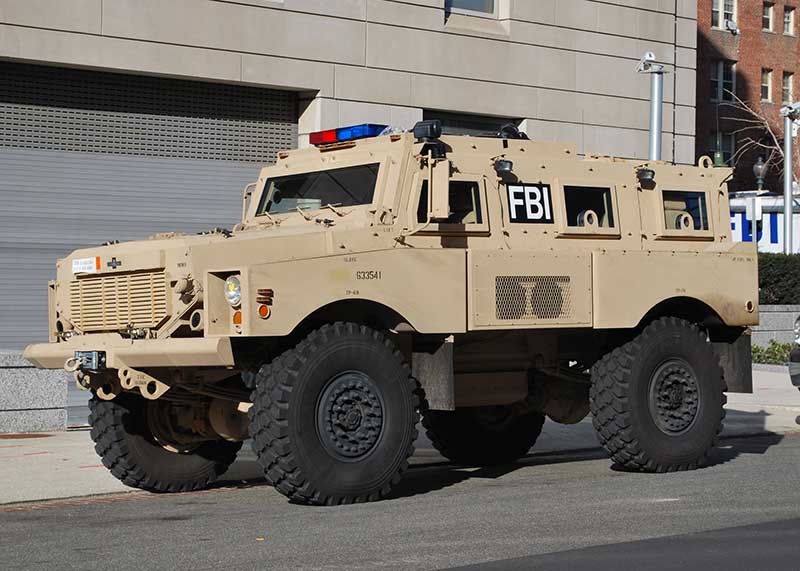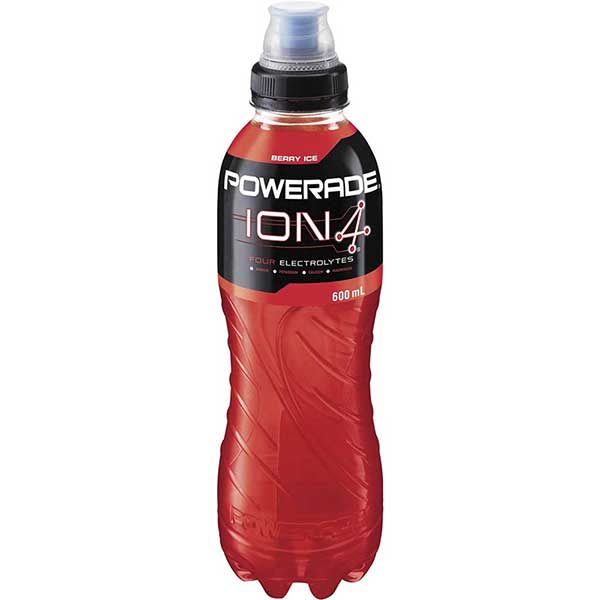
AC-092721-Hy-5-800
Replacing body fluids is the single most important thing that we can do to manage heat stress and maximize performance. Adequate water intake reduces strain on the cardiovascular system and reduces heat-related stresses and injuries.
Dehydration leads to decreased balance, coordination, speed, strength and endurance. It degrades attention, reaction time, reasoning, mood and memory. It’s one of the most common causes of premature fatigue.
Dehydration reduces the capacity for heat loss and often contributes to hyperthermia (elevated body temperature). It’s the primary cause of heat illness. It also increases the chances of going into severe shock if injured. It’s completely preventable.

Hands-free hydration on the go. A CBP Border Patrol bicycle unit on Patrol in McAllen, Texas. Two of the officers are wearing Camelbak hydration packs.

If mission requires tactical armor / plates or travel in armored vehicles, that too increases the heat stresses on the body. FBI Mine Resistant Ambush Protected Vehicle is shown.
PROPER HYDRATION
The frequency of accidents and injuries is higher in hot environments than in moderate environmental conditions. Even low levels of dehydration can significantly impair performance. Without adequate water intake, muscle endurance is reduced in less than one hour under hot and humid conditions. So too, is alertness and metal capacity.
Body water percentage depends on age, body structure and gender. Body fat contains approximately ten percent water. Muscle is approximately 75 percent water. In general, men should have a total body water percentage between 50 and 65 percent. The ideal range for women is between 45 and 60 percent.
The body’s water content must be kept within a relatively narrow range for proper functioning. A loss of just two percent of body weight due to dehydration will significantly reduce mental acuity and physical performance. This loss translates to approximately one quart in the average adult male. A five percent loss of body weight due to dehydration causes heat exhaustion. A seven to ten percent loss of body weight due to dehydration can result in heat stroke and death.

Water is the elixir of life. Without it life is impossible. NASA’s motto in the hunt for extraterrestrial life has been “follow the water.

Traditional canteen has not gone into oblivion. Nalgene Oasis military standard 32oz capacity canteens feature BPA-free, impact-resistant Tritan co-polyester construction.
Athletes can lose two liters of water per hour while exercising. Even at rest in a temperate climate, the body loses a minimum of 1.4 liters of water every 24 hours through perspiration, from the lungs into the air as water vapor, and in the production of urine and feces to rid the body of waste products. The amount of water that’s lost through perspiration is dependent on the level of physical activity and the external temperature.
While thirst may encourage the consumption of enough water to prevent dehydration under moderate conditions, it isn’t always a reliable gauge of water needs. The thirst mechanism may fail because of high losses of water from the body. Once you feel thirsty, you are already dehydrated.
The amount of water necessary will vary based on metabolism, age, weight and physical condition, activity, weather conditions and altitude. Even in temperate conditions, the body may need one pint of water per hour or more during physical activity.
Winter activities can also require an increase in water intake because of sweat and water loss from breathing cold, dry air. The risk of dehydration may actually increase when exercising or working in cold conditions because lower temperatures suppress thirst.
If your kidney function is normal, your level of hydration will be indicated by the color of your urine, although some vitamins and supplements may cause a darkening of your urine that’s unrelated to dehydration. The kidneys, which filter waste, conserve water in response to dehydration and excrete a more more concentrated urine that’s darker in color. The greater the dehydration more concentrated and darker the urine will be.
HYPONATREMIA
Although prolonged sweating can result in a sufficient loss of electrolytes (salts) to cause medical problems, salt tablets are no longer recommended on a routine basis. A single salt tablet increases the body’s water requirements by approximately 0.5 liter. Normal salt loss is easily replaced by eating a balanced diet. However, additional salt should be added to the diet when engaging in prolonged exertion.
Too much water can also create problems. Drinking to completely prevent dehydration tends to dilute the concentration of sodium and other electrolytes in the blood, especially during prolonged exercise of more than two hours.
Although rare, water intoxication (also known as water poisoning, hyperhydration, or water toxemia) is a potentially fatal disturbance in brain functions. It results when the normal balance of electrolytes in the body is pushed outside of safe limits.
Hyponatremia occurs when the level of sodium in the blood is abnormally low. Mild symptoms include a decreased ability to think, headaches, nausea, and poor balance. Severe symptoms include confusion, seizures, and coma.
Water and sports drinks were once considered equally good choices for hydration during intense physical activity. Research has found that sports drinks are better than water in helping maintain an optimal fluid balance. Water is fine for short duration workouts in which sweat losses are minimal.

Numerous people have died searching for the fabled Lost Dutchman Mine in the Superstition Mountains located in the Sonoran Desert in Arizona. Many of the deaths may be attributed to dehydration. Photo: Doug Dolde / Wikimedia Commons. Public Domain.
ELECTROLYTE REPLACEMENT
For longer periods of exertion (>60 minutes) or other activities where sweat losses are substantial use a sports drink or other electrolytic replacement product to maintain hydration and electrolytes, and provide carbohydrates for the muscles. The composition of the replacement products should mimic the composition of the nutritional deficit caused by the activity.
When comparing sports drinks, it’s important to realize that different kinds are available. The three basic kinds of sports drink are isotonic, hypotonic and hypertonic. They each play a different role in the body’s hydration and recovery process.
Most commercially available sports drinks are isotonic drinks. Isotonic drinks contain a concentration electrolytes and carbohydrates similar to that of the human body and are quickly adsorbed, replacing anything that was lost in sweat.
Hypotonic drinks contain a lower concentration of electrolytes and carbohydrates than the human body and are not as effective at replacing losses. Hypertonic drinks contain a higher concentration of electrolytes and carbohydrates than the human body, but they are less easily digested and more slowly adsorbed. They’re most often used after heavy, intense exercise for recovery.

CLIF Hydration Electrolyte Drink Mix is crafted to hydrate during activity with 4% carbohydrates and all five electrolytes to help your body absorb and retain fluid for effective hydration.

Isotonic sports drinks, such as POWERADE ION4 are good to replenish lost electrolytes and recover. ION4 replaces four electrolytes lost in sweat: sodium, potassium, calcium, and magnesium.
HYDRATION BASICS
Here are a few simple tips to prevent dehydration:
1. Always have adequate water available.
2. Always drink water before, during and after physical exertion to replace body fluids.
3. Anticipate conditions that will increase the need for water. These include elevated temperatures, humidity, protective clothing and the level of exertion.
4. You are already dehydrated by the time that you are thirsty. Drink sufficient water to keep your urine copious and pale.
5. Consume at least five to eight ounces of water every 15 to 20 minutes. It’s easier for the body to handle small amounts of water spread out over the day, than larger amounts at one time.
6. Do not exceed 1.5 liters of water per hour. Daily fluid intake should not exceed 12 liters.
7. If water is in short supply, eat minimally to reduce water loss. Water is required for digestion. Avoid fatty foods since they require more water for digestion.
8. Keep cool, clean water within reach at all times. Cool (60 to 70 degrees F) water is absorbed more quickly than warm or very cold fluids.
CAFFEINE & DEHYDRATION
Although caffeinated beverages may have a mild diuretic effect, they don’t appear to increase the risk of dehydration. In moderation, they can actually be an important source of fluid in the diet, as well as improving alertness. In fact, many electrolytic replacement products are now available with caffeine.
NO EXCUSES
We cannot always control the conditions in which we train or operate. We can control the replenishment of body water. Water may mean the difference between life and death and success or failure. Proper hydration is everyone’s responsibility.














